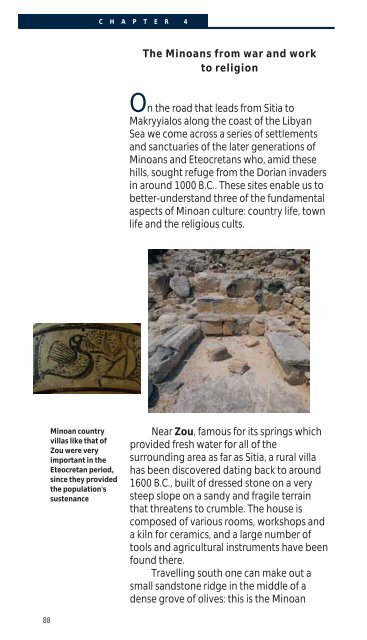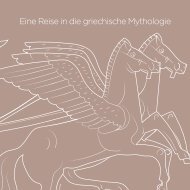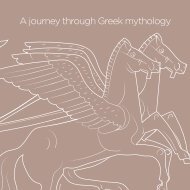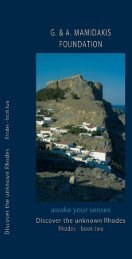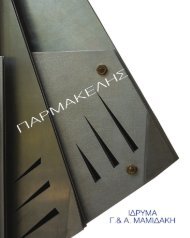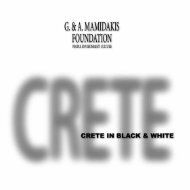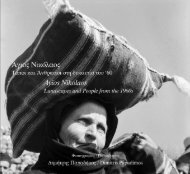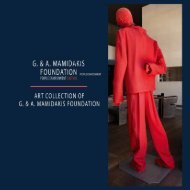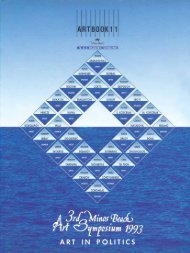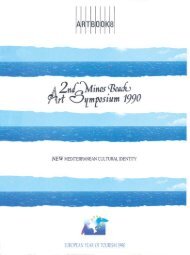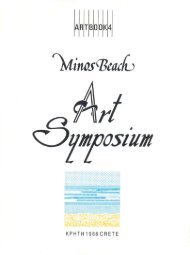EASTERN CRETE
Discover the unknown Crete. Easter Crete, Book one G&A MAMIDAKIS FOUNDATION
Discover the unknown Crete. Easter Crete, Book one
G&A MAMIDAKIS FOUNDATION
You also want an ePaper? Increase the reach of your titles
YUMPU automatically turns print PDFs into web optimized ePapers that Google loves.
C H A P T E R 4<br />
The Minoans from war and work<br />
to religion<br />
On the road that leads from Sitia to<br />
Makryyialos along the coast of the Libyan<br />
Sea we come across a series of settlements<br />
and sanctuaries of the later generations of<br />
Minoans and Eteocretans who, amid these<br />
hills, sought refuge from the Dorian invaders<br />
in around 1000 B.C.. These sites enable us to<br />
better-understand three of the fundamental<br />
aspects of Minoan culture: country life, town<br />
life and the religious cults.<br />
Minoan country<br />
villas like that of<br />
Zou were very<br />
important in the<br />
Eteocretan period,<br />
since they provided<br />
the population's<br />
sustenance<br />
Near Zou, famous for its springs which<br />
provided fresh water for all of the<br />
surrounding area as far as Sitia, a rural villa<br />
has been discovered dating back to around<br />
1600 B.C., built of dressed stone on a very<br />
steep slope on a sandy and fragile terrain<br />
that threatens to crumble. The house is<br />
composed of various rooms, workshops and<br />
a kiln for ceramics, and a large number of<br />
tools and agricultural instruments have been<br />
found there.<br />
Travelling south one can make out a<br />
small sandstone ridge in the middle of a<br />
dense grove of olives: this is the Minoan<br />
88


